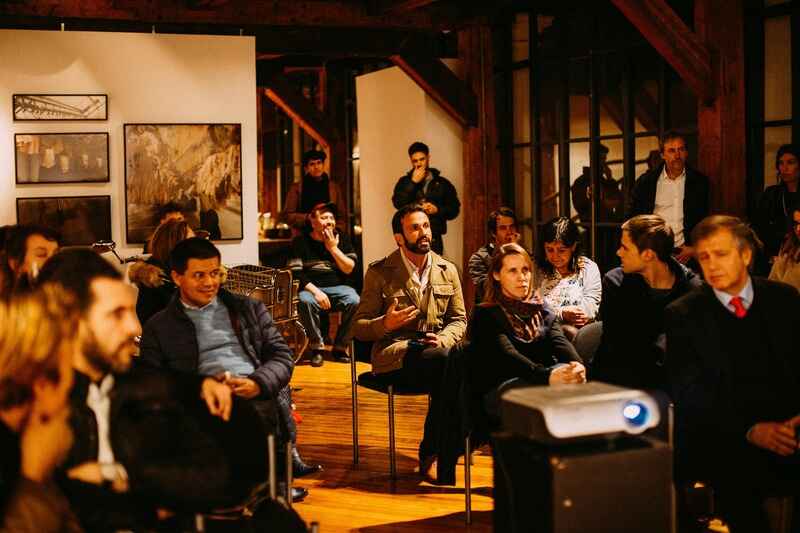The art world has long been influenced by critics, curators, and gallery owners, but the rise of social media has introduced a new player: influencers. These individuals, who have built large followings on platforms like Instagram, YouTube, and TikTok, are redefining how art is discovered, shared, and appreciated. By using their platforms to showcase artworks, artists, and exhibitions, influencers are shaping trends and broadening the reach of the art world in unprecedented ways. This article explores the impact of influencers, how they are changing the industry, and what this means for artists, collectors, and enthusiasts.
The Rise of Art Influencers on Social Media
Social media has become an essential tool for connecting with audiences across various industries, and the art world is no exception. Influencers have emerged as key figures who use platforms like Instagram to share their passion for art, introduce followers to new artists, and highlight exhibitions and events. These influencers often have backgrounds as artists, curators, or art lovers, giving them credibility and insight that resonates with their followers.
One of the key reasons for the rise of influencers is the visual nature of social media. Platforms like Instagram and TikTok prioritize visual content, making them ideal for showcasing art. This has allowed influencers to build large audiences quickly, as users are drawn to striking images, videos, and creative presentations. For artists, this means their work can reach global audiences without relying solely on traditional galleries or exhibitions.
How Art Influencers Are Changing the Art Market
Influencers are not just promoting art; they are actively shaping market trends. By highlighting specific artists, styles, or themes, influencers can drive interest and demand, influencing what collectors buy and how much they are willing to spend. This has been particularly impactful for emerging artists who may not have access to traditional galleries or exhibition spaces.
When an art influencer shares a piece of art, it can lead to immediate interest and even sales, especially if the influencer has a dedicated and engaged following. For collectors, following influencers can be a way to discover new talent and stay ahead of trends. The art market is known for its exclusivity, but influencers are helping to democratize it by making art more accessible and visible to a wider audience.
Art Influencers and the Democratization of the Art World
One of the most significant impacts of Influencers is the democratization of the art world. Traditional gatekeepers, such as galleries and critics, have long controlled who gets visibility and recognition. However, influencers are changing this dynamic by providing a platform for artists from diverse backgrounds to showcase their work. This has led to a more inclusive art scene, where artists who might have been overlooked can find their audience.
Influencers have also made it easier for the general public to engage with art. Instead of needing to visit a gallery or museum, people can discover and appreciate art through their social media feeds. This has increased the visibility of art in everyday life and encouraged more people to take an interest in collecting and supporting artists.
The Role of Art Influencers in Promoting Emerging Artists
Emerging artists often struggle to gain recognition, especially in a market dominated by established names. Influencers play a crucial role in bringing attention to these new voices by showcasing their work on social media. An influencer’s endorsement can lead to increased visibility, more followers, and even opportunities for collaborations with galleries and brands.
For many emerging artists, getting featured by an influencer can be a turning point in their career. It can lead to increased sales, gallery representation, and participation in exhibitions. By acting as intermediaries between artists and audiences, influencers help build bridges that were once difficult to cross without the backing of a traditional gallery.
Art Events and Collaborations With Art Influencers
Influencers often collaborate with galleries, museums, and brands to promote events and exhibitions. These partnerships can be highly beneficial, as influencers bring a fresh perspective and the ability to reach younger, more digitally-savvy audiences. By attending and promoting art fairs, gallery openings, and online exhibitions, influencers help generate buzz and attract visitors.
Some influencers also organize their own events, such as pop-up galleries or online auctions, allowing them to showcase artists they believe in. These events can be more informal and accessible than traditional gallery exhibitions, encouraging a broader audience to engage with art. For collectors, these collaborations can be a way to discover new talent and acquire unique pieces that may not be available through conventional channels.
Influencers and the Rise of Digital Art
The rise of digital art has been one of the most exciting developments in the art world, and influencers have played a significant role in promoting this medium. Digital platforms make it easier to create, share, and sell digital art, and influencers have helped to build a community around this new form of expression. By sharing digital artworks, tutorials, and insights into the creative process, influencers have demystified digital art and made it more accessible to the public.
In particular, the rise of NFTs (non-fungible tokens) has seen influencers becoming key figures in the digital art space. Many have used their platforms to explain how NFTs work, showcase new projects, and connect artists with potential buyers. This has not only boosted the popularity of digital art but also provided a new revenue stream for artists and influencers alike.
The Challenges Facing Art Influencers
While influencers have brought many positive changes to the art world, there are also challenges. The reliance on social media platforms means that influencers are subject to algorithms that can limit their reach or affect their engagement. Additionally, the fast-paced nature of social media can sometimes lead to art being consumed quickly and superficially, rather than appreciated in-depth.
Another challenge is maintaining authenticity. As influencers become more successful, they may face pressure to promote certain artists or brands, which can lead to accusations of bias or commercialization. For influencers, balancing their passion for art with the demands of their platform and sponsors is crucial to maintaining their credibility and influence.
Art Influencers and the Future of Art Appreciation
Influencers are changing how people experience and appreciate art. By making art more accessible, they are encouraging more people to explore the art world and develop their tastes. For many, following an influencer is a way to learn about art in a more approachable and less intimidating way than traditional avenues.
The future of art appreciation may well be shaped by how influencers continue to use their platforms. Virtual reality exhibitions, live streaming of art shows, and interactive content are just some of the ways influencers are experimenting with new ways to present art. As technology advances, influencers will likely play a key role in bridging the gap between the digital and physical art worlds.
The Influence of Art Collectors on Influencers
While influencers have a significant impact on the art world, they are also influenced by the preferences of collectors. Collectors who follow influencers may share their interests, request certain content, or engage with particular posts, all of which can shape the types of art that influencers choose to feature. This relationship creates a feedback loop where both influencers and collectors play a role in setting trends.
For artists, understanding this dynamic is essential. Building relationships with both collectors and influencers can open new opportunities for exposure and sales. As the art world becomes more interconnected through digital platforms, these relationships will continue to grow in importance.
Conclusion: The Impact of Influencers on the Modern Art Scene
Influencers have become powerful players in the modern art scene, reshaping how art is seen, shared, and sold. By leveraging social media platforms, they have made art more accessible and democratized, bringing attention to emerging artists and new forms of expression. For collectors, influencers offer a way to discover and connect with art in a more immediate and engaging way.
The influence of these digital curators is only likely to grow as social media becomes more integrated into everyday life. For artists, collectors, and enthusiasts, understanding the role of influencers is key to navigating the contemporary art world. Whether promoting traditional paintings or cutting-edge digital art, influencers are bridging the gap between artists and audiences, making the art world more dynamic, inclusive, and vibrant.
The art world has long been influenced by critics, curators, and gallery owners, but the rise of social media has introduced a new player: influencers. These individuals, who have built large followings on platforms like Instagram, YouTube, and TikTok, are redefining how art is discovered, shared, and appreciated. By using their platforms to showcase artworks, artists, and exhibitions, influencers are shaping trends and broadening the reach of the art world in unprecedented ways. This article explores the impact of influencers, how they are changing the industry, and what this means for artists, collectors, and enthusiasts.
the contemporary art world. Whether promoting traditional paintings or cutting-edge digital art, influencers are bridging the gap between artists and audiences, making the art world more dynamic, inclusive, and vibrant.


